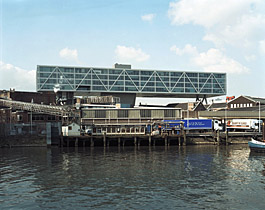
Dutch architects show how to densify space
 |
The traveling exhibition was prepared by the Netherlands Architecture Institute and will take place in Prague as part of the festival of contemporary Dutch culture NethWorks.cz from today until June 20.
Among the presented examples are solutions from the cities of Amsterdam, Arnhem, Eindhoven, Eschede, Groningen, Lelystad, Maastricht, Rotterdam, Tilburg, Utrecht, and Zaanstad. The exhibition features projects ranging from residential, community, and office buildings to university campuses both on the peripheries and in the original centers of urban agglomerations.
While cities in other parts of the world continue to grow explosively, in the Netherlands, their growth is rather inward. Until recently, almost every Dutch city was characterized by a multitude of underutilized spaces, overgrown areas, excess land, and other empty places, whether intentionally empty or not. In the last two decades, previously unfilled places in urban structures have quickly disappeared, filled with buildings or public spaces.
The most significant interventions in the last 15 years and some projects primarily involve the transformation of former industrial and port areas, densification of urban centers, regeneration of post-war residential buildings, and intensification of transport routes and hubs.
These projects showcase a wide range of strategies, from careful restoration of old buildings in inner cities transformed by modernist urban planning to radical new solutions, such as building above existing houses and dual land use.
This suburbanization has its roots in the post-World War II period when the Dutch government began decentralizing spatial planning, allowing cities and their municipalities the right to decide on development projects.
The issue of development in older urban units also affects many Czech and Moravian cities, and the organizers believe that the exhibition showcasing the long-term efforts of Dutch experts will be an inspiration for both the local lay and professional public.
The English translation is powered by AI tool. Switch to Czech to view the original text source.
0 comments
add comment






